Sleep tracking wearables can revolutionize how you understand your menstrual cycle by monitoring hormonal fluctuations through physiological signals like skin temperature, heart rate variability, and sleep patterns. During your mid-luteal phase, rising progesterone affects sleep onset times, while basal body temperature changes indicate ovulation. Advanced wearables use machine learning to predict fertility windows and cycle irregularities with greater accuracy than traditional calendar methods, transforming your reproductive health management and empowering you to discover the intricate connections between your nighttime patterns and hormonal rhythms.
Understanding the Science Behind Sleep-Based Menstrual Tracking
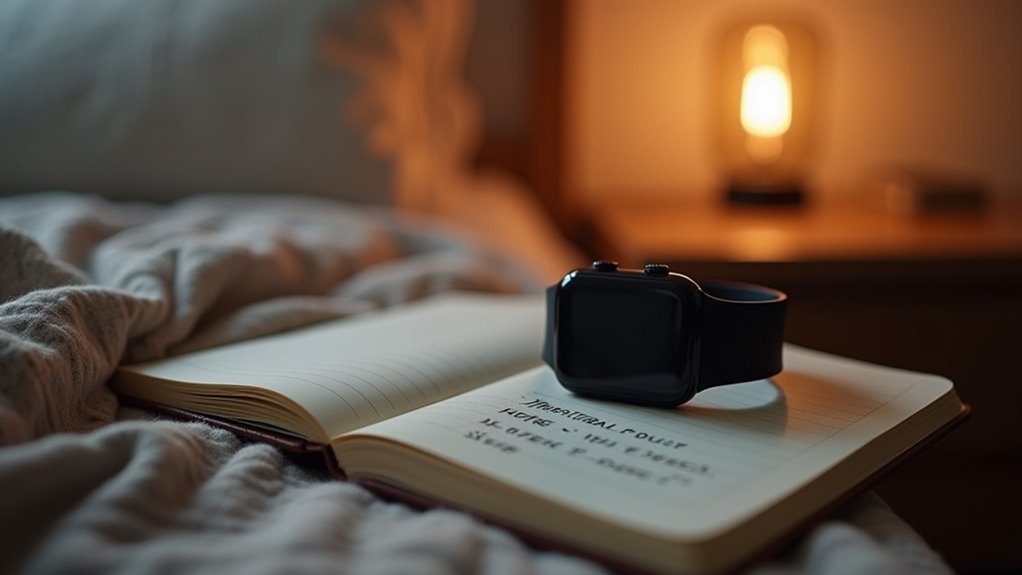
While you sleep each night, your body provides a wealth of data about your menstrual cycle through measurable changes in sleep patterns. Your hormones—estrogen and progesterone—fluctuate throughout your cycle, directly affecting how you sleep.
During the mid-luteal phase, you’ll experience longer sleep onset times as progesterone rises, making it harder to fall asleep despite its sedative properties. Your total sleep time decreases during this phase, while sleep efficiency drops during menstruation compared to your mid-follicular phase.
These patterns occur because progesterone metabolites influence your brain’s GABA receptors, altering sleep-wake regulation. Your body temperature also rises with progesterone, further disrupting sleep quality. Research shows that sleep disruptions are particularly pronounced during the peri-menstrual phase, when you experience increased time awake at night.
Sleep tracking wearables capture these biomarkers—sleep onset latency, efficiency, and duration—creating reliable indicators for predicting menstrual phases.
Types of Wearable Devices for Nighttime Cycle Monitoring
You’ll find three main categories of wearable devices designed for nighttime menstrual cycle tracking: external wristband devices, internal sensor options, and specialized sleep-optimized wearables.
External devices like the Ava bracelet and Oura Ring monitor your skin temperature and heart rate from your wrist or finger while you sleep.
Internal sensors, including vaginal and ear-based options, can provide more accurate core temperature readings but require different insertion and maintenance routines. These devices show high accuracy in detecting fertility and differentiating between cycle phases through continuous physiological monitoring.
External Wristband Devices
When choosing external wristband devices for menstrual cycle tracking, you’ll find that these innovative tools monitor multiple physiological signals throughout the night to provide detailed fertility insights.
The Ava Bracelet tracks five physiological signals and measures temperature every 10 seconds during sleep, using machine learning algorithms to identify your most fertile days.
You’ll also discover the Oura Ring monitors your menstruation through sleep cycle changes, heart rate variations, and temperature fluctuations.
These devices offer you remarkable convenience since you’ll only wear them at night, avoiding daytime disruption.
You’ll benefit from continuous monitoring that provides personalized insights, helping reduce your time to conception while offering a cost-effective alternative to expensive fertility treatments for data-driven reproductive health decisions. The Ava device provides twice as many fertile day detections compared to traditional LH ovulation tests, giving you more opportunities for successful conception timing.
Internal Sensor Options
Several internal sensor options offer more accurate menstrual cycle tracking by measuring core body temperature directly within your body rather than relying on skin surface readings.
Intravaginal devices provide the most precise measurements by continuously monitoring temperature changes that correlate with hormonal fluctuations throughout your cycle. You’ll get detailed data on ovulation, luteal phases, and menstruation without daytime interference from external factors. These wearable devices can track progesterone levels and notify users 24 hours before ovulation occurs.
In-ear sensors offer a less invasive alternative, positioning inside your ear canal to capture core temperature while reducing environmental interference. These devices track fertility windows discreetly during sleep with minimal disturbance.
Advanced multi-parameter internal sensors combine temperature monitoring with heart rate, respiratory rate, and electrodermal activity measurements, using artificial intelligence to predict fertile windows with enhanced accuracy through thorough physiological data analysis.
Sleep-Optimized Wearable Features
While internal sensors provide the highest accuracy, sleep-optimized wearables offer a practical middle ground for menstrual cycle tracking without the invasiveness of body-inserted devices.
You’ll find comfortable options like the Oura Ring and Ava Bracelet, which continuously monitor heart rate, skin temperature, and sleep patterns throughout the night.
These devices track physiological changes that correlate with your menstrual cycle stages. Heart rate sensors detect cardiovascular fluctuations, while temperature sensors monitor thermal variations that occur during different cycle phases.
Sleep cycle sensors identify pattern changes that often accompany hormonal shifts.
You can wear these devices continuously without discomfort, allowing for ongoing data collection. The Evie Ring specifically designed for women offers 4+ days of battery life with continuous monitoring capabilities.
Studies show promising accuracy in detecting cycle-related changes, making them cost-effective alternatives to traditional fertility tracking methods while providing detailed insights into your reproductive health.
Key Physiological Signals Measured During Sleep
Modern wearable devices capture a sophisticated array of physiological signals that reveal the intricate relationship between your body’s natural rhythms and menstrual cycle fluctuations.
These devices continuously monitor your heart rate and heart rate variability, providing essential insights into how your autonomic nervous system responds to hormonal changes throughout your cycle.
Your device also tracks:
- Skin temperature variations that correlate with ovulation and different menstrual phases
- Respiratory patterns estimated from HRV data during various sleep stages
- Skin conductance levels reflecting emotional and physiological responses to hormonal shifts
This thorough monitoring reveals how sympathetic activity decreases during deep sleep while parasympathetic activity increases, supporting your body’s restorative processes. However, physiological factors can affect device performance in real-world settings, making it important to understand your device’s limitations when interpreting sleep and cycle data.
Understanding these signals helps you optimize sleep quality during different cycle phases.
How Wearables Distinguish Between Ovulating and Non-Ovulating Cycles
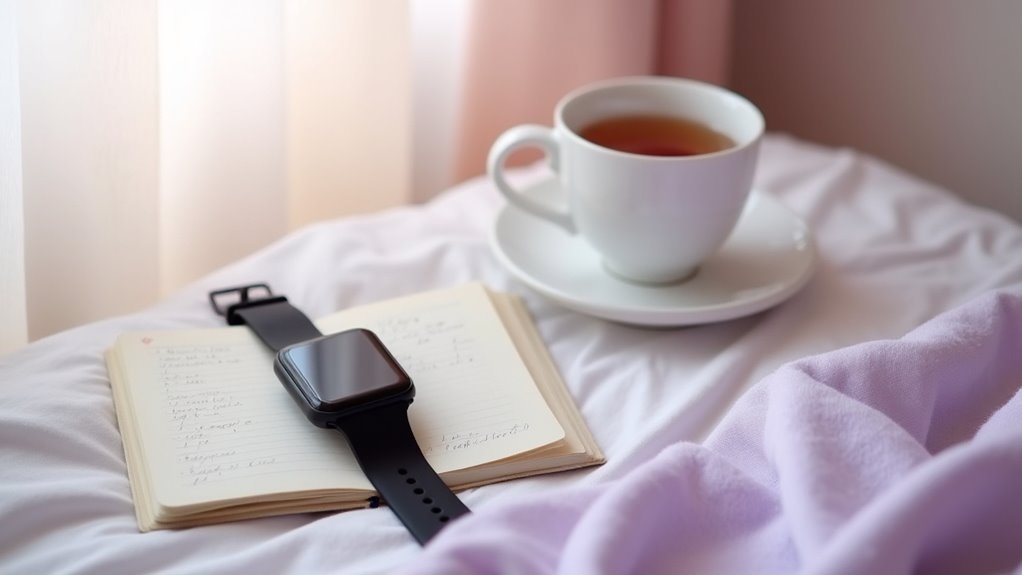
Beyond simply recording these physiological signals, advanced wearables now analyze specific patterns to determine whether you’re experiencing true ovulatory cycles or anovulatory ones.
Your device tracks basal body temperature fluctuations, looking for the characteristic biphasic pattern where temperatures rise after ovulation and remain elevated. It also monitors cycle length and regularity, as anovulatory cycles often show irregular timing.
Advanced wearables detect the telltale biphasic temperature pattern that confirms actual ovulation occurred, distinguishing fertile cycles from irregular anovulatory ones.
Some wearables integrate multiple data points from finger-recorded physiology, while others use intravaginal sensors for more precise temperature tracking.
Devices like OvuSense confirm ovulation rather than just predicting it, distinguishing between cycles where you’ve actually released an egg versus those where hormonal changes occurred without ovulation. These FDA Cleared medical devices provide clinical-grade accuracy for reproductive health monitoring.
This analysis helps you understand your fertility patterns and identify potential reproductive health issues requiring attention.
The Role of Body Temperature Tracking in Fertility Assessment
Since your body’s core temperature naturally fluctuates throughout your menstrual cycle, tracking these changes provides valuable insights into your fertility status. Your basal body temperature (BBT) rises by 0.4–0.8°F after ovulation and remains elevated until your next cycle begins or early pregnancy occurs.
Modern wearables automate this process with built-in thermometers, eliminating user error while providing continuous monitoring. However, you’ll get the most accurate results by combining temperature data with other fertility indicators:
- Cervical mucus changes and consistency
- Cycle length patterns and regularity
- Physical symptoms like breast tenderness or cramping
While BBT confirms ovulation retrospectively rather than predicting it in advance, tracking for several cycles helps you identify patterns.
This symptothermal approach greatly improves fertility awareness for both conception planning and natural family planning methods. If your temperature remains elevated for 18 days post-ovulation, this pattern can help detect early pregnancy.
Machine Learning Models for Predicting Menstrual Phases
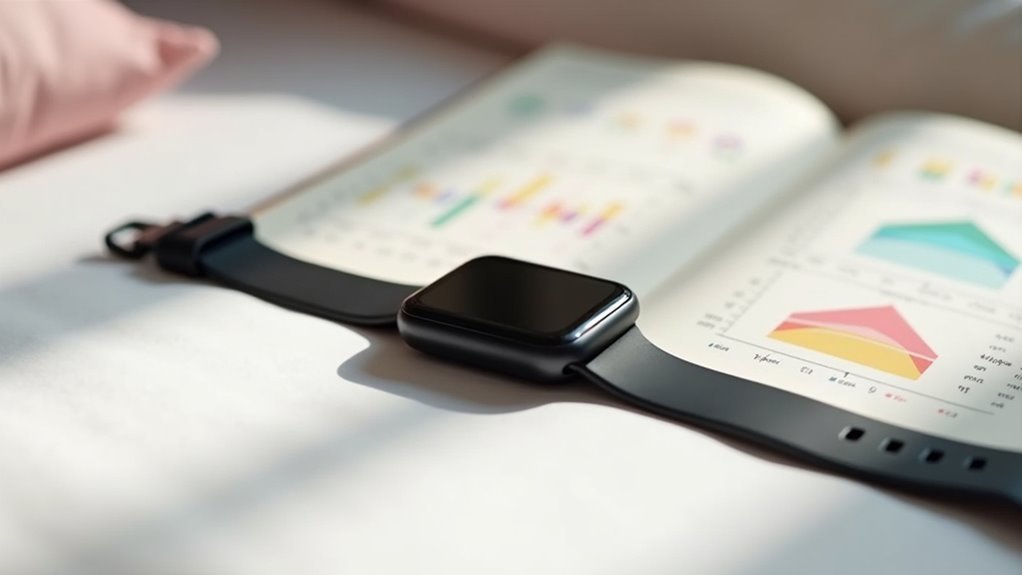
Your sleep data becomes the foundation for regression models that predict when you’ll enter each menstrual phase, from follicular to luteal stages.
These algorithms require consistent, high-quality tracking to distinguish between actual physiological patterns and missed data points. Time series forecasting models analyze patterns in your sleep metrics to identify the cyclical changes that correspond with hormonal fluctuations throughout your menstrual cycle.
You’ll get more accurate predictions as your tracking habits improve and the model learns your unique cycle characteristics.
Regression Model Applications
When traditional calendar methods fall short of accurately predicting your menstrual cycle phases, machine learning models like XGBoost, convolutional neural networks (CNNs), recurrent neural networks (RNNs), and long short-term memory (LSTM) networks step in to revolutionize cycle tracking.
These regression models consistently outperform simple statistical baselines by detecting patterns you can’t identify manually. The advanced algorithms create personalized reminders that adapt to your unique menstrual patterns and health needs.
Your wearable’s heart rate data, particularly minimum heart rate during sleep, becomes a powerful predictive feature when combined with cycle day information. This integration offers significant advantages:
- Reduces ovulation detection error by up to 2 days
- Handles missing or inconsistent tracking data automatically
- Adapts predictions as your cycle evolves over time
The models leverage both your individual cycle history and population data, improving accuracy especially if you experience irregular cycles where traditional methods fail completely.
Data Quality Requirements
Machine learning models deliver impressive results, but their predictive power depends entirely on the quality and completeness of your input data. You’ll need continuous, longitudinal sleep and physiological data to enhance model accuracy for menstrual phase prediction. High-resolution, noise-free sensor data from your wearables is necessary for fine-grained pattern detection.
| Data Quality Factor | Impact on Model Performance |
|---|---|
| Complete cycle tracking | Improves timing predictions |
| High-resolution sensors | Enables fine-grained detection |
| Accurate timestamps | Guarantees proper event alignment |
| Multi-modal integration | Increases prediction precision |
| Consistent formatting | Prevents training errors |
Data gaps or inconsistent tracking reduce your model’s reliability and increase prediction error margins. You’ll want accurate timestamp synchronization to guarantee behavioral and physiological events align properly for temporal modeling. Wrist skin temperature serves as a particularly reliable physiological indicator for tracking reproductive function patterns.
Practical Benefits for Reproductive Health Management
While traditional cycle tracking methods rely on manual input and daytime measurements, sleep-based monitoring through wearables delivers continuous physiological data that transforms how you manage reproductive health.
These devices detect subtle temperature and heart rate changes during sleep, accurately predicting ovulation and fertile windows to support your family planning decisions. Research shows that heart rate tracking is the most utilized feature among women, with 78% citing it as essential for monitoring cardiovascular health and detecting hormonal fluctuations throughout their cycle.
Sleep monitoring captures precise physiological shifts that traditional daytime tracking methods simply cannot detect for comprehensive reproductive insights.
Your wearable’s predictive analytics enable proactive reproductive health management through:
- Cycle irregularity detection – Early identification of patterns that may indicate PCOS or endometriosis
- Medication timing optimization – Dosage adjustments based on your specific menstrual phase
- Symptom correlation tracking – Connecting sleep patterns and physiological changes to headaches, cramps, and mood fluctuations
This extensive monitoring creates an evidence-based foundation for healthcare discussions while empowering you to make informed reproductive choices and personalize lifestyle adjustments to your unique cycle patterns.
Future Advancements in Sleep-Integrated Cycle Tracking Technology
As artificial intelligence and sensor technology continue evolving, sleep-integrated cycle tracking is poised to revolutionize reproductive health monitoring with unprecedented precision and insights.
You’ll benefit from advanced machine learning algorithms that analyze multiple physiological parameters simultaneously, detecting your fertile window with remarkable accuracy in real-time.
Future wearables will feature sophisticated sensors monitoring heart rate variability, core body temperature, and movement patterns throughout your sleep cycles.
These devices will seamlessly integrate extensive health data, correlating sleep quality with menstrual phases to reveal previously hidden patterns.
You’ll receive AI-powered personalized recommendations through intuitive mobile apps, while smart alarms will optimize your wake times based on both sleep stages and cycle phases. Advanced systems will also flag cycle abnormalities that may indicate underlying health conditions requiring medical attention.
Internal devices and ear-worn sensors will provide even more precise core temperature readings, ensuring continuous monitoring without disrupting your comfort or daily routine.
Frequently Asked Questions
How Much Do Sleep Tracking Wearables for Menstrual Monitoring Typically Cost?
You’ll find sleep tracking wearables for menstrual monitoring cost between $50-$300+. Basic devices start around $50-$100, while advanced smart rings like Evie cost $269. Some include monthly subscription fees around $10.
Can Sleep Tracking Wearables Replace Traditional Birth Control Methods for Pregnancy Prevention?
You can’t rely on sleep tracking wearables alone to replace traditional birth control methods. While they’ll help track fertility windows, they’re less reliable than pills, IUDs, or condoms for preventing pregnancy.
Are There Any Side Effects From Wearing Menstrual Tracking Devices Overnight?
You’ll typically experience minimal side effects from overnight menstrual tracking devices. You might notice mild skin irritation from prolonged contact, but reputable devices are designed for safe overnight wear with non-invasive sensors.
How Long Does It Take to See Accurate Menstrual Predictions From Wearables?
You’ll need to wear your device for 2-3 complete menstrual cycles before you’ll see accurate predictions. Your wearable’s algorithms must learn your unique physiological patterns first.
Do Sleep Tracking Wearables Work for Women With Irregular Menstrual Cycles?
Sleep tracking wearables show mixed results for irregular cycles. You’ll find physiology-based devices like Oura Ring perform better than calendar methods, but most accuracy studies exclude irregular cycles, limiting reliable data.

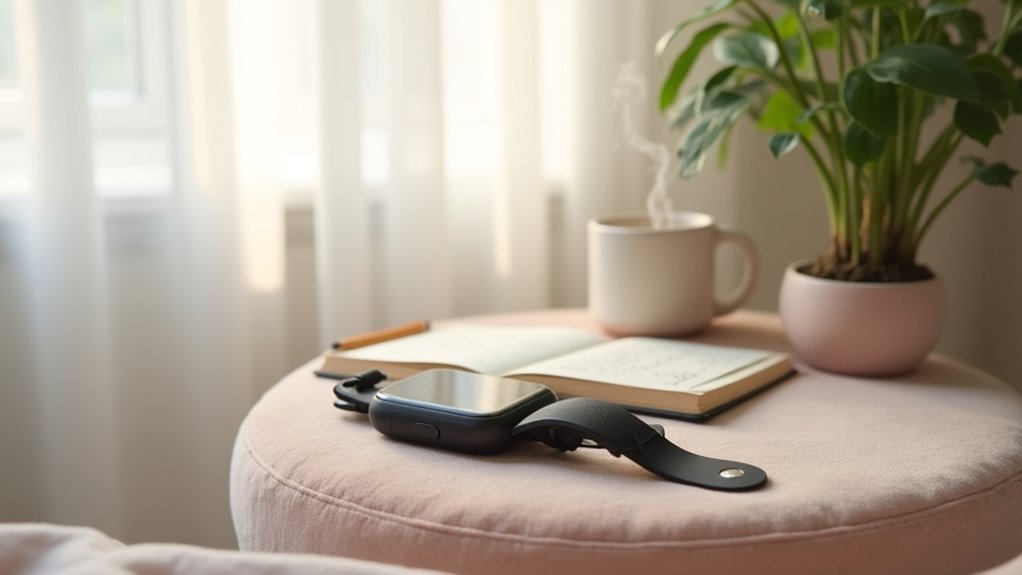
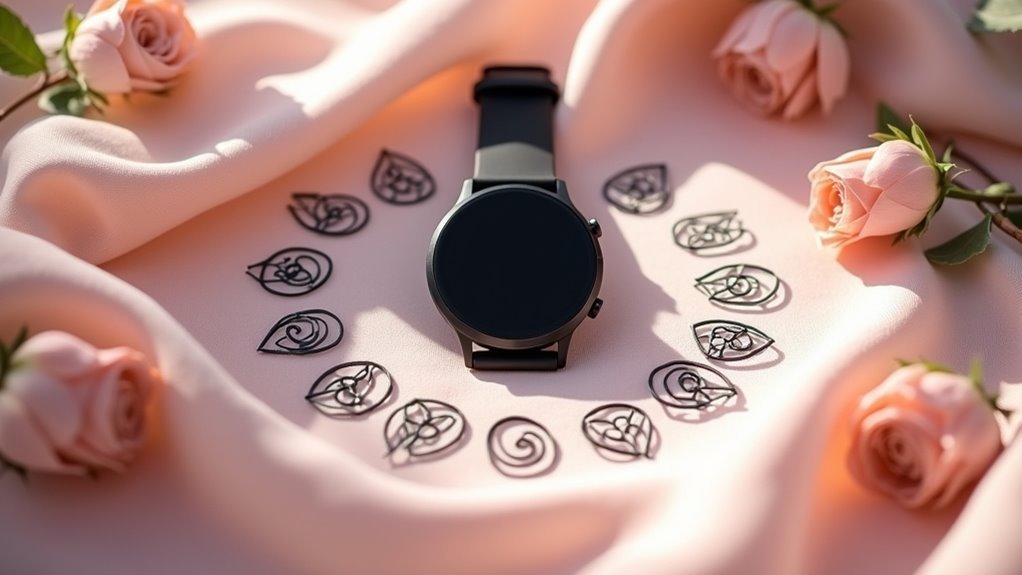

Leave a Reply